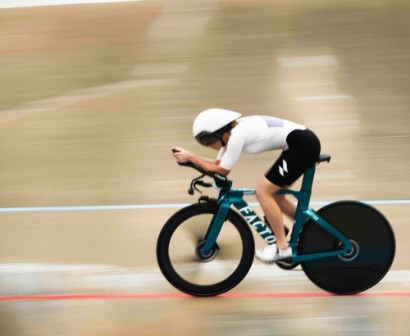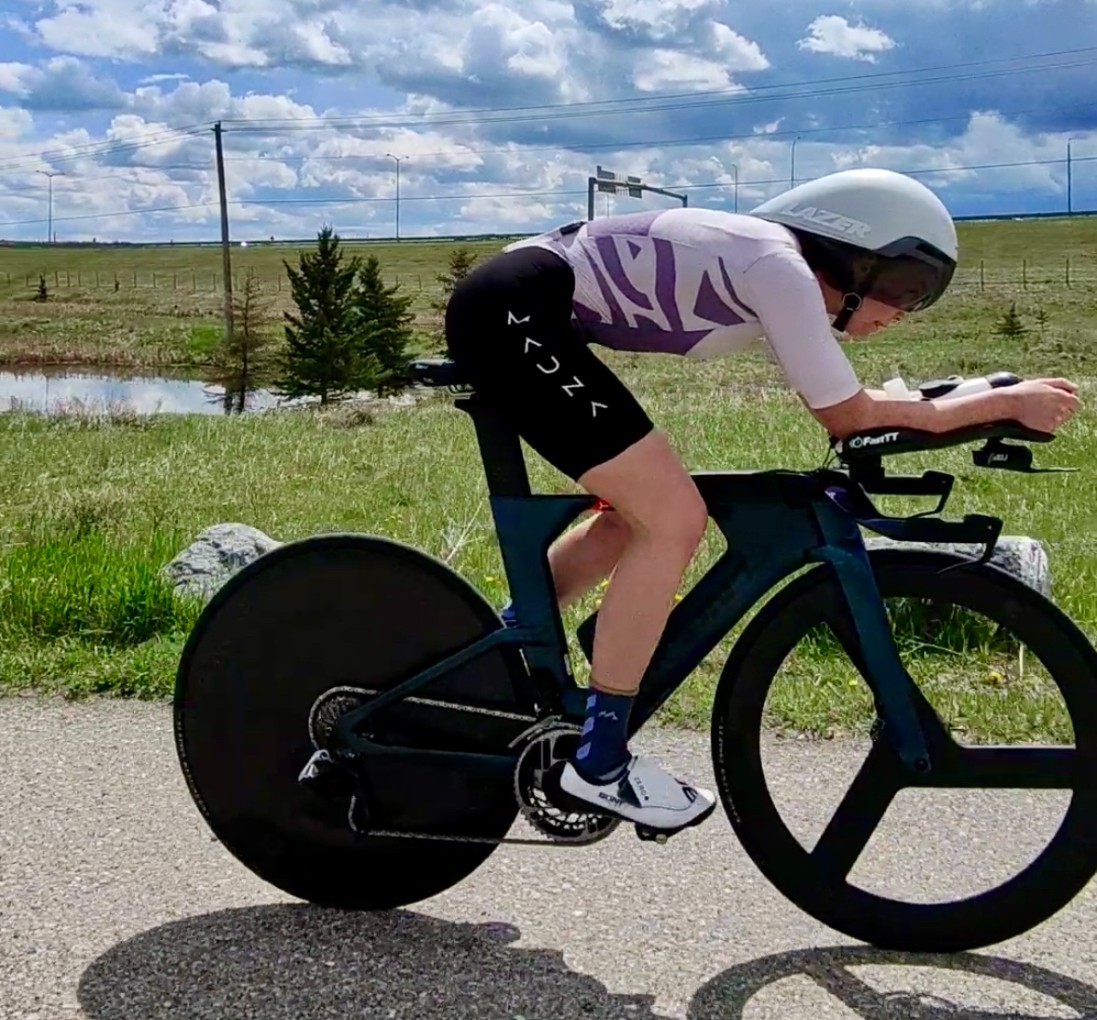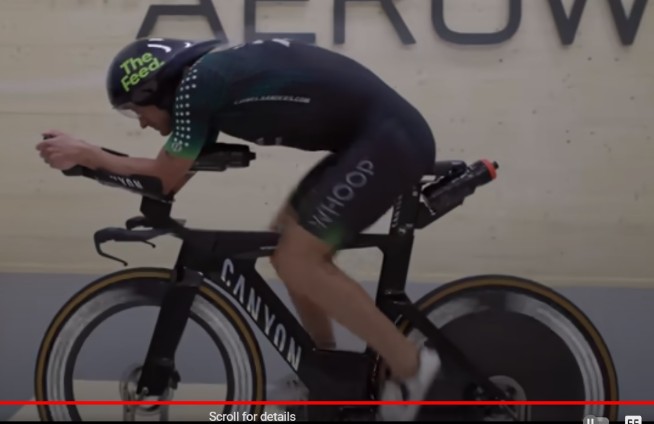Ok, lots of aero talk these days so I figured I would share. I totally got sucked into the aerodynamics and CdA obsession (though not quite water bladder down my trisuit level of obsessed). I’ve always worked towards a fast looking position on the bike and spent years working to achieve what I thought was “free speed.” While I don’t have a pro-level FTP, I usually have some of the fastest bike splits so figure my CdA couldn’t be too bad.
This year, I’ve shifted focus from Ironman to Duathlon to switch it up for a year (threshold work, yuck, but probably good for me after all of the years of Ironman focus). I quickly realized I can’t run nearly as fast as the other women doing duathlon so I wanted to see if I could get as aero as possible to use my bike handing and aerodynamics to make up for my run on the bike especially with a 40km bike instead of ironman it means I can go more aggressive.
Initially, I did some aero testing at a velodrome in Houston, where my CdA was 0.225 on my Factor Hanzo—decent for an age grouper but with room for improvement. After getting a new Argon E-119 Tri+ Disc bike, I wanted to see if I could get faster (and make sure it was at least as fast as my Hanzo)
I reached out for recommendations on aero sensors and was pointed towards the GiBLI Aero Sensor, which promised on-road testing without needing a coach or complicated data analysis. They said I could do aero testing on my own without a coach, I was a little skeptical, I am a triathlon coach but do not have experience with aero testing. Thankfully it turns out with their app it was super easy to set up and get rolling with some tests.
Initial Tests: Tested my Factor Hanzo with a race setup, showing a CdA of 0.216. Inspired by Lionel Sanders, I adjusted my aero bars from a 25-degree angle to 10 degrees, dropping my CdA to 0.208. That was a surprisingly significant gain—over 3 minutes in an Ironman.New Bike Tests: On my Argon, with identical wheels and aerobars, with a retul fit to set up the bike almost identical position wise to my Hanzo, the CdA was 0.217 at 25 degrees and 0.205 at 10 degrees. It showed position really matters a lot, 2 different bikes and very similar numbers.Stack Height and Reach: went out another day and played around more to see what it would do to CdA
Stack height: High (0.219 CdA), moderate (0.216), low (0.210).Reach (both with low stack): Moderate reach (0.208), long reach (0.205).No Surprises here, long and low is faster for me.Final Tweaks: By making my elbows more narrow with a long reach and low stack, my CdA dropped to 0.203. From my starting point of** 0.225**, this improvement could shave almost 2 minutes off a 40km duathlon bike leg, or hey if I can hold it over Ironman would be over 8 minutes
It’s an aggressive position but went back to my bike fitter afterwards and looked at all of the numbers with the Retul system and while it is super aggressive, for 40km shouldn’t be a problem, and I had no issues holding it on my last 2 hour ride. Would I do this position for an Ironman? Maybe, maybe not, we will see how the body adapts, but that’s not the goal this year. Next up I’m going to start testing equipment for those last few percentage points, let me know if you want to hear about those tests. Super impressed with how easy it has been to test with the GiBLI G10 sensor, it actually takes into account elevation and wind direction and has GPS on board so the only external sensor I need is a power meter.





